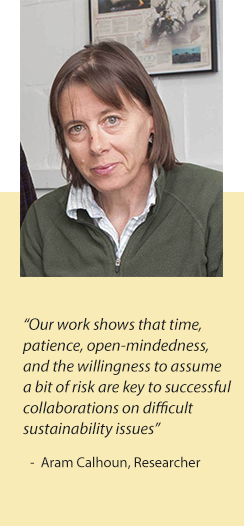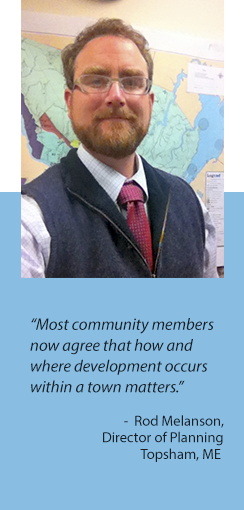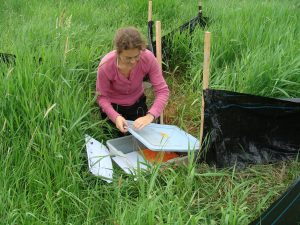Road-Testing New Solutions with Maine’s Municipalities
 One of the biggest problems facing cities and towns around Maine and the nation is figuring out how to grow in ways that don’t harm the environment or the very things people cherish about their communities. A Mitchell Center team led by Aram Calhoun, Professor of Wetland Ecology, is using local vernal pool conservation as a model to help communities find ways to balance economic development with natural resource conservation on private land.
One of the biggest problems facing cities and towns around Maine and the nation is figuring out how to grow in ways that don’t harm the environment or the very things people cherish about their communities. A Mitchell Center team led by Aram Calhoun, Professor of Wetland Ecology, is using local vernal pool conservation as a model to help communities find ways to balance economic development with natural resource conservation on private land.
The project builds on years of research on vernal pool ecology and a partnership among UMaine, Maine Audubon, and the Maine State Planning Office. Calhoun’s team is now working with two Maine towns and state and federal regulatory agencies to create ways that would relax vernal pool protection in growth zones in exchange for greater protection of pools and associated habitat in rural areas. Their findings will give communities more flexibility in balancing development and conservation, help municipal officials tailor vernal pool regulations to better meet local needs, and provide a model for other communities seeking solutions to similar challenges.
Participating in the project has already benefitted the planning process in Topsham, according to Rod Melanson, Topsham director of planning, development and codes.
 Working within this collaborative is rewarding on many levels,” Melanson says. First, he says, collaborators have created a new, high-quality database of significant vernal pools and related resources that the planning office now uses for all significant project reviews. Created primarily by Calhoun’s team and the community volunteers they trained, the database also will allow the town to prioritize the most important vernal pools and land for conservation.
Working within this collaborative is rewarding on many levels,” Melanson says. First, he says, collaborators have created a new, high-quality database of significant vernal pools and related resources that the planning office now uses for all significant project reviews. Created primarily by Calhoun’s team and the community volunteers they trained, the database also will allow the town to prioritize the most important vernal pools and land for conservation.
The collaborative also has provided a wealth of relevant information in response to the needs of local landowners and policymakers alike. Melanson says this information has raised community awareness about both the ecological value of vernal pools and the economic constraints to development within designated growth areas—and helped diverse interests find common ground. “Most community members now agree that how and where development occurs within a town matters,” Melanson says.
Topsham and Orono are now testing the tools that Calhoun’s team has developed to improve strategies for balancing economic development with conserving vernal pools in urbanizing landscapes. This ongoing work is part of a four-year, $1.49 million grant from the National Science Foundation in which the researchers are exploring the economic, environmental and social components of vernal pool ecology and management.

“Our work shows that time, patience, open-mindedness, and the willingness to assume a bit of risk are key to successful collaborations on difficult sustainability issues,” Calhoun says. “We have found that the time invested is well worth the effort. The exchange and synthesis of diverse ideas lead to outcomes that are more widely embraced and enduring.”
